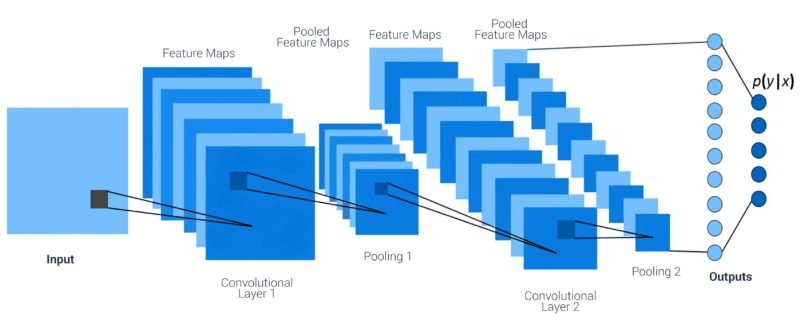According to Forrester market analysis 10% to 30% of all online sales are done through cross-selling or upselling. Amazon (with 560 million SKUs) has been consistently reporting 35%. Once an e-commerce passes а certain threshold, catalog management and maintenance increases exponentially. One of the most common problems includes: updating existing SKUs, managing multiple sales channels, and working with incomplete data from suppliers. While companies’ focus is on sales, cross-selling and upselling needs to be a functionality that takes minimal effort and continuously improves. Machine learning and in particular иmage рecognition provides this capability for any catalog. Furthermore it decreases the heavy cost associated with building a recommendation engine internally, based on keywords, user abandonment carts, and cookies.
Contents
Building Product Recommendation Using Image Recognition
How do you approach building a product recommendation engine? First of all you’ll need a lot of data. There are a bunch of tutorials and walkthroughs which will certainly help you understand how AI is being built but to create one yourself, you would need a skillset from diverse backgrounds:
- Mathematical: applied statistics knowledge, calculus, deep understanding of algebra and algorithms especially unsupervised learning cases
- Computer Science: data structure for deep learning, programming neural networks, and machine learning algorithms building
- Science: a deep understanding of several programming languages, cognitive learning theory, and natural language processing
Probably you are not going to spend years learning science and developing these skills, but you’ll learn from the organizations that are already using a ready solution. Both Fortune 500 companies and government agencies purchase these fubctionaities as a service and let the experts research and apply their expertise.
Every AI vendor does it differently – mostly through an API. You will notice that the generic tagging of some vendors performs better in some use cases rather than others and the accuracy can vary significantly. This is because, for a well-working functionality, the model needs to be trained specifically for those types of objects. For example, if you are trying to build an image recognition solution that would recognize all the different iPhone cases available on the market in terms of brands, sizes, materials, etc. then you need to show the neural net for all possible options and teach it similar to a baby who is learning by seeing.
If AI companies can teach their algorithms on any dataset, they would be breaching a whole bunch of laws for privacy regarding your personal or company data especially GDPR restriction in the EU, which are having an impact on US data as well. Hence the question “Why do I need an AI company when I can learn to build and I hold all the datasets? They will only build a neural network and algorithms”. This is the chicken and an egg problem which we will not explore but you can read more here.

FIGURE: Training a Model
Once you are done building your data sets and are ready for training, you need experts to make sure that the training of the neural net is working properly.
Now that we know that building image recognition software is no easy task how do we make it work for an e-commerce store with +100.000 SKUs?
Use Cases for E-Commerce
Customer-centric suggestions and searches
Users often leave an online store because they don’t find what they are looking for. For example, if I am looking for a non-stick frying pan and the Facebook ad is saying non-stick frying pan for 20$ then entering the landing page I want to see with big words “non-stick frying pan”, this is pretty intuitive.
How can you achieve the same logical mind map for an e-commerce search engine where there are dozens of characteristics of a product?
Search results can be significantly improved through contextualization – using AI software to organize and tag keywords that are particular for the product. The consistency of this tagging is only as good as the training of the neural network and this simple mechanical task can be performed when an image is being uploaded. Users can make mistakes tagging when uploading their product images and try to qualify for keywords that are not relevant but machines can not. As a result, users receive product keywords that are much more suitable and have a higher probability of making a sale.
The goal of the algorithms is to make the search more intuitive for the user based on history and rules set by the programmers. For example, Pinterest uses image recognition to identify items on an image user uploads so that they make product and tag suggestions. Тhis approach can further be extended for e-commerce and remarking purposes.

Social Media Commercialization
Have you noticed Facebook has become incredibly good at suggesting products that you like in one of its platforms? How does this happen? Once you click on an item this click automatically falls under a category. Once an item is added to this category through image recognition new items can easily be suggested just by uploading an image on your Facebook wall. This is because the image is tagged upon upload and immediately gets associations and with every next upload the AI becomes incrementally better at understanding your preferences.
Conclusion
Artificial intelligence can provide businesses with opportunities to make a more personalized experience and recommendations but those are only as good as the services they are using and the data they receive. Today AI can help achieve every e-commerce dream and place personalized items based on consumer behavior instantly, which gives the organization power but can also scare and sometimes overwhelm the user.